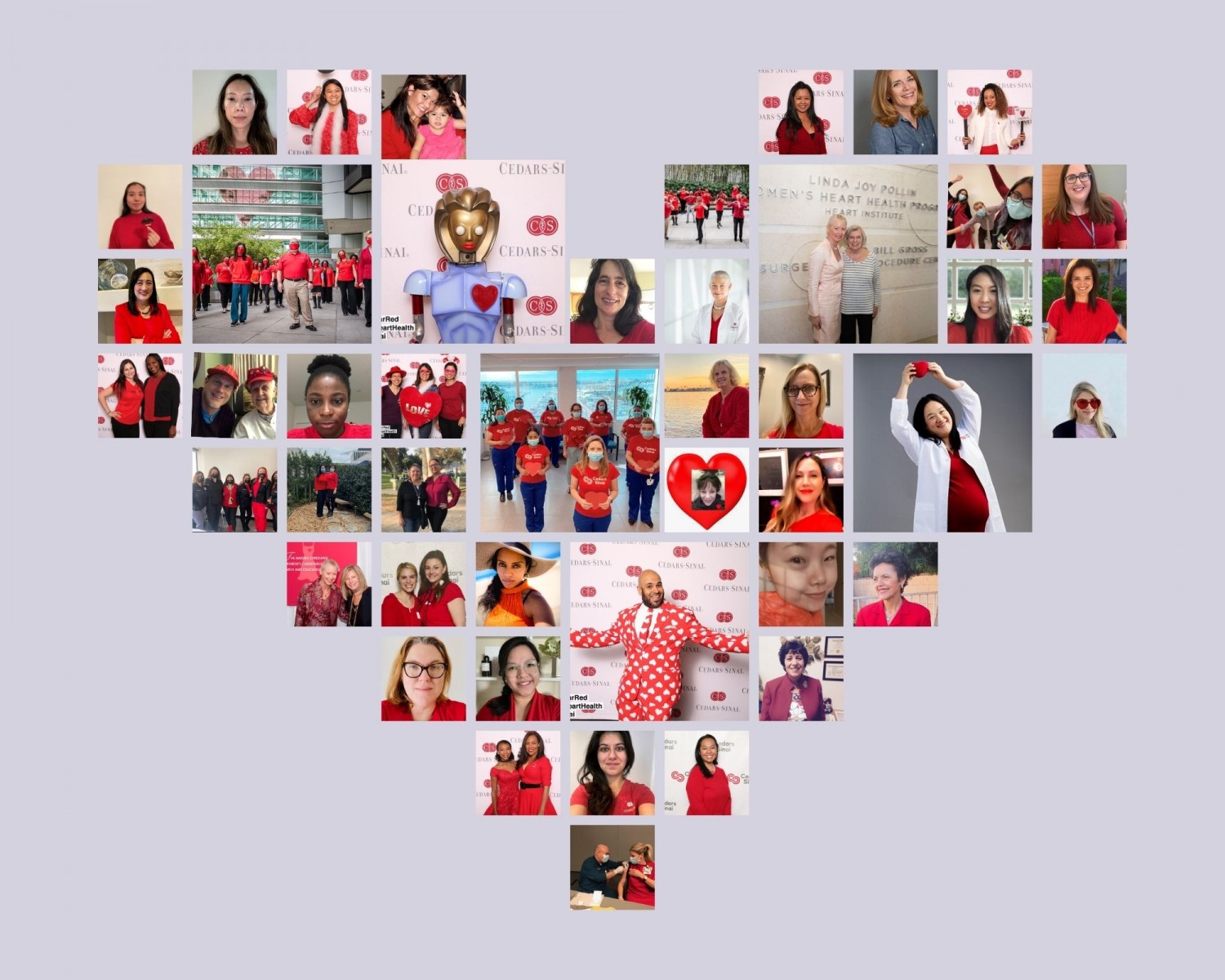“Cardiovascular disease is the #1 cause of death for women in the United States, and two out of three American women have at least one risk factor,” said Noel Bairey Merz, MD, director of the Barbra Streisand Women’s Heart Center in the Smidt Heart Institute. “Equally as alarming, 12 times as many women die of heart disease every year as die from breast cancer. These statistics bear repeating, because despite its prevalence, many women remain in the dark about the condition.”
That is why on Friday, Bairey Merz, the Irwin and Sheila Allen Chair in Women’s Heart Research, will be leading a discussion with Cedars-Sinai experts as part of the 16th annual Linda Joy Pollin Women’s Heart Health Day. Healthcare professionals from across Cedars-Sinai will gather virtually to review the latest findings about women and heart disease.
It was only about 10 years ago that investigators realized that men and women can experience different symptoms and different types of heart disease, and this remains inconsistently taught in medical education. For example, studies demonstrate that while both men and women experience chest pain during a heart attack, women often also alternatively experience shortness of breath, nausea and jaw pain, which can be less recognized as heart disease.
The differences also affect a diagnosis of conditions like ischemic heart disease. Men with blocked arteries in the heart are likely to be diagnosed using an angiogram. However, women have smaller arteries which cannot always be clearly seen during an angiogram. As a result, many women are often given the “all-clear” and are sent home without a diagnosis.
Over the past two decades, Bairey Merz and her team of investigators have made key discoveries in identifying female-pattern heart disease, developing new diagnostic tools and advancing specialized care for women.
“This is especially crucial because until recently, medical research has been performed dominantly on men—not including the woman it greatly impacts,” said Bairey Merz.
But that is changing, said Christine Albert, MD, MPH, chair of the Department of Cardiology in the Smidt Heart Institute.
“Female-focused research has been at the heart of the Barbra Streisand Women’s Heart Center, as teams have been working to correct these gender inequalities and to educate women on how to recognize female-pattern heart disease symptoms,” said Albert, the Lee and Harold Kapelovitz Distinguished Chair in Cardiology.
These efforts, Albert says, have helped found the new Center for Research in Women’s Health and Sex Differences (CREWHS). The effort, initiated by the Helping Hand of Los Angeles Chair in Obstetrics and Gynecology at Cedars-Sinai, Sarah Kilpatrick, MD, PhD, utilizes translational research to improve women’s health across a wide array of medical specialties.
But of all the critical findings to come out of the Barbra Streisand Women’s Heart Center, Albert and Bairey Merz say one of the most important outcomes happened recently: the identification of ischemia with no obstructive coronary artery disease, or INOCA.
Only a few short years ago, this disease that primarily affected women’s hearts had no name. But in spring of 2017, researchers in the Barbra Streisand Women’s Heart Center and at the National Institutes of Health gave it a name in the journal Circulation, the major scientific voice of the American Heart Association (AHA).
“Today we not only know what INOCA is, but we also know how to diagnose and treat it,” said Bairey Merz.
The small vessel dysfunction in the heart affects roughly one-third of women with ischemic heart disease, although many often go undiagnosed and their symptoms are dismissed or downplayed by medical professionals. Spasms and dysfunction in the tiny, microvascular blood vessels that branch off from the larger coronary arteries are the most common cause of INOCA, and new risk-assessment methods to reliably diagnose women with INOCA are being developed and tested.
Looking ahead, Cedars-Sinai cardiologists are looking to better understand knowledge gaps in science, including effective treatments in INOCA, heart failure, broken heart syndrome, and whether treating younger women with absent or irregular periods with birth control may, or may not be, effective for prevention of heart disease.
For now, the Smidt Heart Institute has a simple plea: for all women to be informed about their heart health.
“When it comes to heart disease, men and women are different,” said Bairey Merz. “Women’s hearts are smaller; their risk factors are different and so are their symptoms. Talk to your healthcare provider and urge them to check your heart. It could be the difference of your life.”
Read more from the Cedars-Sinai Blog: High Blood Pressure: What Women Need to Know


